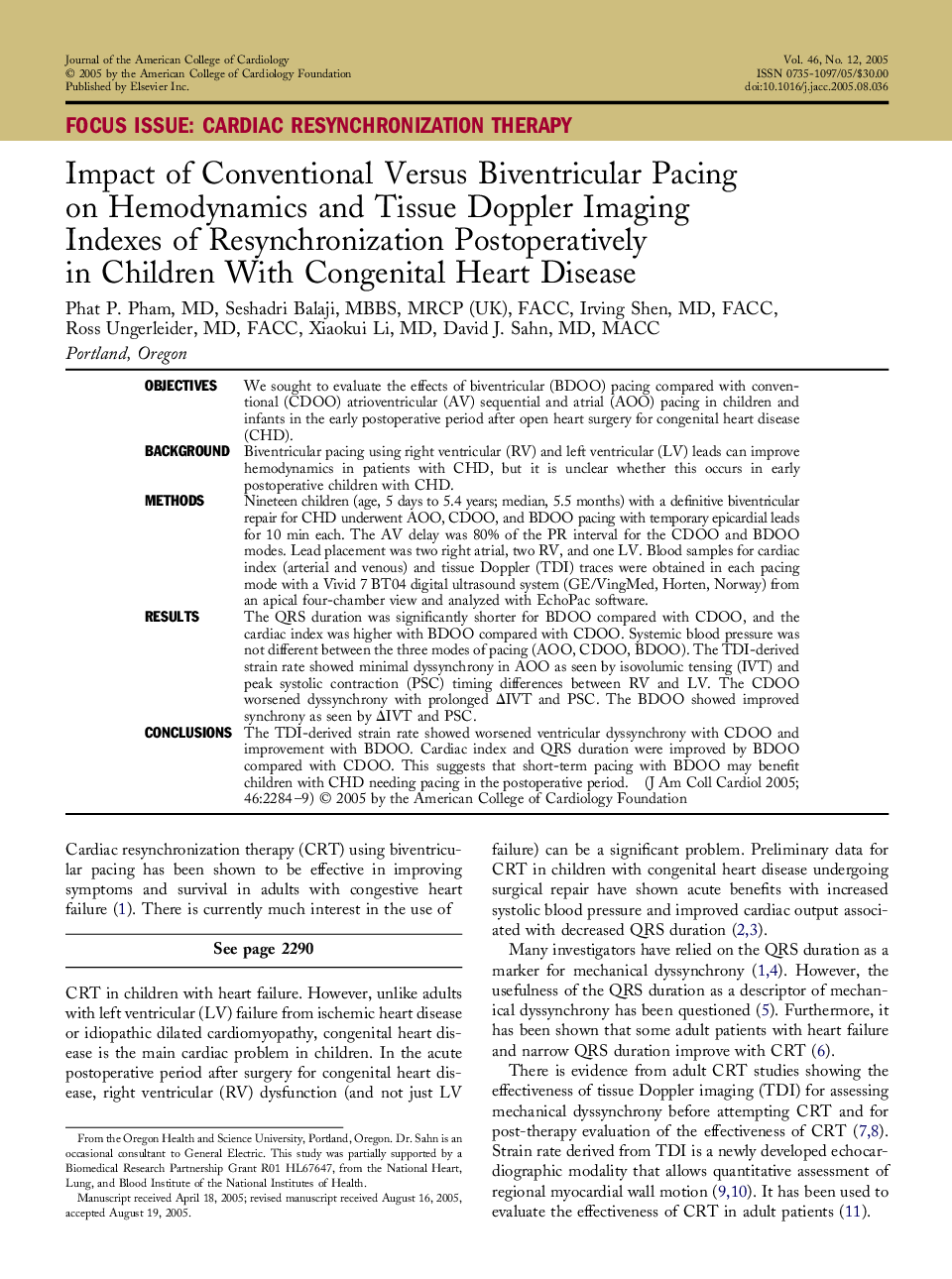| کد مقاله | کد نشریه | سال انتشار | مقاله انگلیسی | نسخه تمام متن |
|---|---|---|---|---|
| 2952693 | 1577526 | 2005 | 6 صفحه PDF | دانلود رایگان |

ObjectivesWe sought to evaluate the effects of biventricular (BDOO) pacing compared with conventional (CDOO) atrioventricular (AV) sequential and atrial (AOO) pacing in children and infants in the early postoperative period after open heart surgery for congenital heart disease (CHD).BackgroundBiventricular pacing using right ventricular (RV) and left ventricular (LV) leads can improve hemodynamics in patients with CHD, but it is unclear whether this occurs in early postoperative children with CHD.MethodsNineteen children (age, 5 days to 5.4 years; median, 5.5 months) with a definitive biventricular repair for CHD underwent AOO, CDOO, and BDOO pacing with temporary epicardial leads for 10 min each. The AV delay was 80% of the PR interval for the CDOO and BDOO modes. Lead placement was two right atrial, two RV, and one LV. Blood samples for cardiac index (arterial and venous) and tissue Doppler (TDI) traces were obtained in each pacing mode with a Vivid 7 BT04 digital ultrasound system (GE/VingMed, Horten, Norway) from an apical four-chamber view and analyzed with EchoPac software.ResultsThe QRS duration was significantly shorter for BDOO compared with CDOO, and the cardiac index was higher with BDOO compared with CDOO. Systemic blood pressure was not different between the three modes of pacing (AOO, CDOO, BDOO). The TDI-derived strain rate showed minimal dyssynchrony in AOO as seen by isovolumic tensing (IVT) and peak systolic contraction (PSC) timing differences between RV and LV. The CDOO worsened dyssynchrony with prolonged ΔIVT and PSC. The BDOO showed improved synchrony as seen by ΔIVT and PSC.ConclusionsThe TDI-derived strain rate showed worsened ventricular dyssynchrony with CDOO and improvement with BDOO. Cardiac index and QRS duration were improved by BDOO compared with CDOO. This suggests that short-term pacing with BDOO may benefit children with CHD needing pacing in the postoperative period.
Journal: Journal of the American College of Cardiology - Volume 46, Issue 12, 20 December 2005, Pages 2284–2289